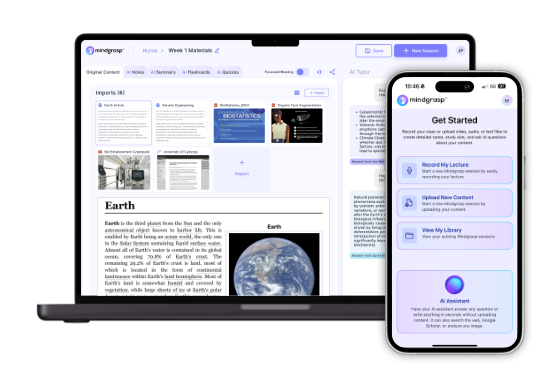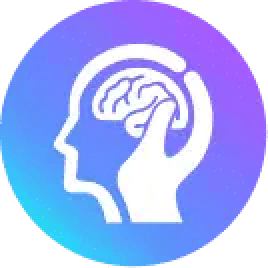
To cram for a public health exam, we need to be strategic.
First, identify high-impact topics using the CPH Exam Reference List and practice tests. Don't just re-read notes—use flashcards, teach concepts aloud, and create visual aids like epidemiological triangles or concept maps.
Join study groups for collaborative learning, and don't forget short breaks and proper sleep.
Whether you have 24 hours or a week, prioritization is key—the right approach makes even complex material manageable.
Why cramming for public health feels harder than other classes
While many students can pull off last-minute study sessions for history or literature classes, public health cramming feels like an entirely different beast.
We're dealing with a complex web of interconnected concepts—from epidemiology to social determinants of health—that simply don't lend themselves to quick memorization.
When preparing for your CPH or other public health exams, you'll quickly realize why cramming feels harder: these tests don't just ask for facts. They demand critical thinking through case studies and real-world applications.
Unlike memorizing dates or formulas, public health exam prep requires understanding how numerous theories and models work together.
Taking a practice exam often reveals this challenge—you might know individual concepts but struggle to connect them under pressure.
The sheer volume of material, combined with the need for practical application, makes last-minute studying particularly intimidating in this field.
Boost Your GPA Faster with Mindgrasp
Instantly turn your class notes into smart summaries, flashcards, and quizzes—study less, learn more, and ace your exams.
Try it FreeStep 1: Determine what to study (Prioritize high-impact topics)
When faced with limited study time, your first priority must be identifying which topics deserve your attention. To prepare for the CPH exam efficiently, we recommend starting with the CPH Exam Reference List—it's your roadmap to high-impact topics that appear most frequently on the test.
Don't waste precious hours on low-yield material! Instead:
- Take the free NBPHE practice exam to spot your knowledge gaps
- Review the official CPH Study Guide for commonly tested questions
- Join study groups to compare notes on challenging topics
- Chat with recent exam-takers about what surprised them
Step 2: Gather your public health materials and make a quick plan
Now that you've identified what to focus on, it's time to gather all your study materials in one place! Collect your textbooks, class notes, and any online resources you've been using throughout your coursework.
It's a good idea to check the CPH Test Reference List to find the most relevant publications.
Once everything's assembled, create a simple study plan:
- Divide remaining time before your exam into blocks
- Assign specific topics to each time slot
- Set aside time to take the free NBPHE practice exam (it closely mimics the actual exam format!)
Consider finding a study buddy or forming a small group—explaining concepts to others helps cement your understanding.
Plus, they might catch things you missed!
Step 3: Use active recall to study public health (Don’t just re-read)
Let's face it—simply rereading your public health notes over and over won't cut it when you're cramming! Your brain needs to work harder to truly lock in those epidemiology principles and health policy concepts.
Instead, try these active recall strategies:
- Quiz yourself with flashcards covering key terminology and frameworks
- Close your notes and practice explaining concepts aloud (yes, talking to yourself is totally fine!)
- Teach the material to a friend or your cat—explaining helps cement your understanding
- Create quick practice questions and answer them without peeking
- Take mini practice exams that mimic the real thing
This approach forces your brain to retrieve information—strengthening those neural pathways way more effectively than passive reading.
Trust us, your stressed-out brain will thank you later!
Step 4: Break down complex public health processes with diagrams
The human brain loves visuals, especially when tackling complicated public health concepts!
We've found that diagrams can be your secret weapon when cramming for an exam. Try these approaches:
- Draw the epidemiological triangle to understand how agents, hosts, and environments interact in disease transmission.
- Create flowcharts for processes like outbreak investigations—map out case identification, contact tracing, and control measures.
- Use infographics to memorize statistics and health outcome data.
- Sketch concept maps connecting social, economic, and environmental health determinants.
- Make simple timelines of major public health milestones and legislation.
Don't worry if you're not an artist! Even basic diagrams help anchor complex ideas in your memory.
Plus, the act of creating visuals forces you to organize information in ways that reading alone can't match.
Step 5: Leverage AI study tools like Mindgrasp AI for public health
While diagrams help visualize complex concepts, modern technology offers even more powerful study aids.
We've found that Mindgrasp AI is a game-changer for last-minute public health exam prep! This smart tool quickly condenses those massive textbooks into personalized summaries — highlighting exactly what you need to know.
Stuck on epidemiology concepts? Just ask Mindgrasp questions and get instant clarifications (way better than flipping through pages frantically).
What we really love is how it generates practice questions from your materials, helping you spot knowledge gaps before exam day.
Plus, the interactive learning features make even the driest public health policies stick in your memory.
Try Mindgrasp for Free!
Experience an easier, faster way to boost your GPA. Sign up now to try Mindgrasp AI for free and see how AI-powered learning transforms your study routine.
Try it FreeStep 6: Memorize key terms and definitions with flashcards & mnemonics
When it comes to passing your public health exam, flashcards and mnemonics aren't just helpful — they're absolutely essential for last-minute cramming!
We recommend creating flashcards with terms on one side and definitions on the other. Group related concepts together (like all epidemiology terms in one stack) to make connections between ideas.
Don't just read your cards — actively quiz yourself using spaced repetition, reviewing difficult terms more frequently.
Make your flashcards stick by:
- Adding simple drawings or diagrams
- Creating funny mnemonics (like "RICE" for Rest-Ice-Compression-Elevation)
- Studying in themed batches rather than random order
Remember to test yourself regularly rather than just reviewing. This forces your brain to retrieve information — exactly what you'll need to do during the exam!
Step 7: Practice with questions and problems
Flashcards help you memorize terms, but now it's time to put that knowledge into action! The best way to prepare for your public health exam is by tackling actual practice questions.
We recommend these effective approaches:
-
Work through problems in the Official CPH Study Guide to get familiar with the exam format.
-
Take the free NBPHE online practice exam to simulate test conditions.
-
Use NBPHE CPH Test Prep's customizable practice items and flashcards.
-
Join a study group where you can quiz each other (two heads are better than one!).
-
Watch On-Demand CPH Review Webinars for explanations of tricky concepts.
Don't just read your notes over and over—active practice is what cements your knowledge.
Try answering questions without peeking at your notes first, then review what you missed.
Step 8: Take short breaks and look after yourself
Even the most dedicated students need to refuel their brains!
We've found that studying in 25-30 minute chunks—followed by short breaks—dramatically improves how much information we actually retain. It's science, not slacking!
During these mini-breaks, try:
- A quick 5-minute walk around the block
- Some jumping jacks or stretches to get your blood flowing
- A few deep breaths or a mini-meditation
Don't forget the basics: drink at least 8 cups of water daily (your brain needs hydration to focus!), and please get those 7-9 hours of sleep before your exam.
It's understood that it's tempting to pull an all-nighter, but your memory literally consolidates while you snooze. Your brain will thank you—and so will your public health professor when they see your improved test scores!
Cramming for public health in 1 Day, 3 Days, or 1 Week
Now, let's look at how we can tackle our public health exam cramming based on how much time we've left.
We've got different strategies for one-week, three-day, and one-day timeframes—each requiring a slightly different approach to maximize your chances of success.
Whether you're facing a week-long study marathon or a 24-hour emergency cram session, we'll help you make the most of every minute you've got before test day.
Cramming for public health with one week left
When you've got a week left before your public health exam, it's time to create a battle plan that'll help you conquer all that material. With seven days on your side, we can get strategic!
Start by mapping out a daily schedule that dedicates specific time blocks to each exam domain. Don't forget to mix it up with practice tests to identify your weak spots—they're goldmines for focusing your efforts!
Consider joining a study group (or making one) to keep yourself accountable and share notes. Try different study methods too—flashcards for definitions, webinars for tough concepts, and the CPH guide for everything else.
Most importantly, don't burn out! Schedule sleep, healthy meals, and short breaks. Your brain works better when it's not running on fumes!
Cramming for public health with three days left
So you've only got three days until your public health exam? Don't panic—we're going to make every hour count! At this stage, being strategic is everything.
First, grab the CPH Exam Reference List and focus only on high-yield topics—no time for in-depth explorations now. Take the NBPHE's free online practice exam to quickly spot your weak areas (trust us, this is essential).
Consider these quick-win strategies:
- Join a study group—even virtually—to discuss tricky concepts
- Create a strict hour-by-hour study schedule with short breaks
- Use flashcards for rapid-fire concept reviews
- Prioritize sleep—a rested brain retains more than an exhausted one
Cramming for public health with one day left (24 hours)
You've made it to the final countdown—just 24 hours until your public health exam!
Now's the time to focus on high-yield activities:
- Review only the most critical concepts from the CPH study guide—don't try to learn anything new.
- Take the free NBPHE practice exam to identify your weakest areas that need immediate attention.
- Create a tight schedule: 2-3 hours per domain with 10-minute breaks between each session.
- Use flashcards or Quizlet for quick review sessions—active recall works wonders for last-minute studying!
Most importantly, get enough sleep tonight. Your brain needs rest to consolidate what you've learned.
Common mistakes to avoid when cramming and how to fix them
Despite our best intentions, many of us fall into common cramming traps that waste precious study time. One major mistake is failing to prioritize—check your exam reference list to identify frequently tested topics so you're studying what matters most.
Don't just memorize facts! We've all been there—reciting definitions without understanding them. Instead, try practice exams and study groups to deepen your comprehension.
Remember these quick fixes:
-
Take short breaks—they actually help your brain retain information better
-
Don't skimp on sleep—fatigue clouds your thinking when you need clarity most
-
Set a strict schedule with tools like Quizlet to combat procrastination
-
Review exam priorities, not everything in your textbook
Your brain (and your grade) will thank you!
Final Takeaways on public health cram studying
When exam day looms on the horizon, effective cramming becomes your lifeline in public health studies.
We've found that success boils down to a few key strategies: prioritize topics from the CPH Exam Reference List, don't waste time on unlikely material.
Those on-demand review webinars? Pure gold for quick domain refreshers!
Don't forget to:
- Test yourself with flashcards and practice questions
- Join forces with classmates (two heads are better than one!)
- Take that free practice exam to build confidence
Download Mindgrasp from the App Store
Access Mindgrasp at your desk for in-depth research and writing projects, or use the mobile version to easily access your content on-the-go or record live lectures.
Download the iOS App
